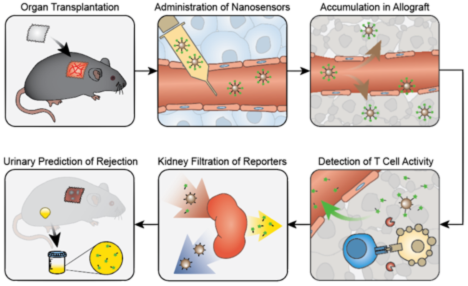An experimental screening method, developed by Emory and Georgia Tech scientists, aims to detect immune rejection of a transplanted organ earlier and without a biopsy needle.
The technology is based on nanoparticles that detect granzyme B enzymes produced by killer T cells. When the T cells are active, they slice up the nanoparticles, generating a fluorescent signal that is detectable in urine. The results from a mouse skin graft model were published in Nature Biomedical Engineering, from Gabe Kwong’s lab at GT and Andrew Adams’ at Emory. More extensive story here.

Co-first authors Quoc Mac and Dave Mathews
Adams is also developing technologies for imaging transplant rejection via immunoPET, with Georgia Tech’s Phil Santangelo.


